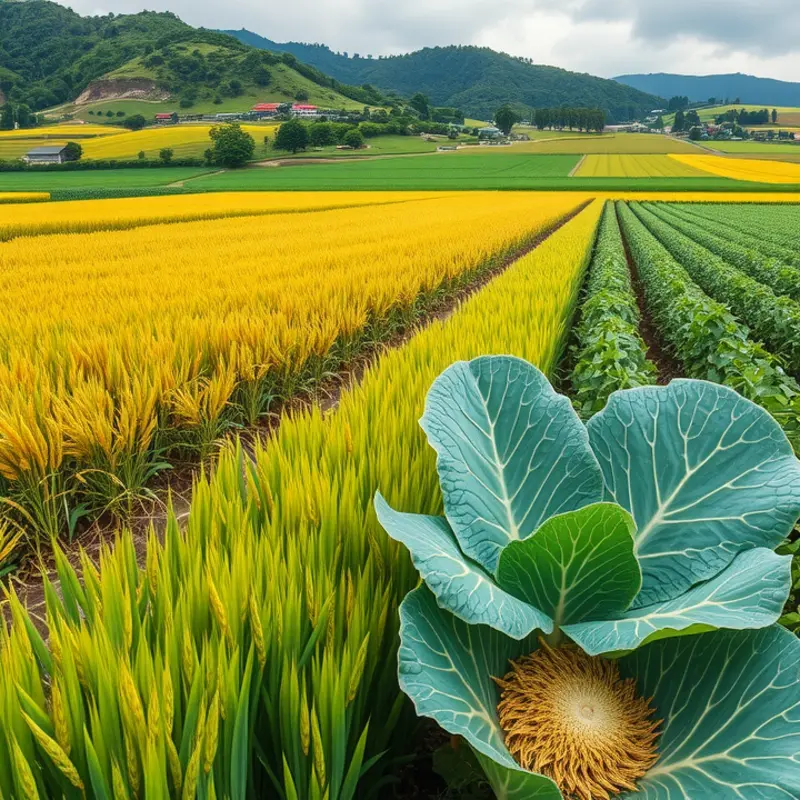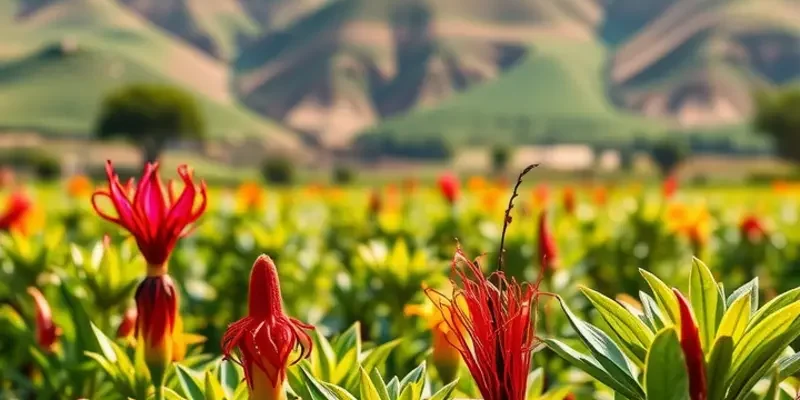Cuisine is a time capsule of human history, culture, and evolution. Each dish tells a story, reflecting the geography, traditions, and practices of those who create it. From the spices of trade routes to the ingredients born of necessity, historical foods offer a unique lens through which to view our shared past. As food enthusiasts and culture seekers, understanding these culinary roots provides flavor to our culinary adventures and appreciation for global traditions.
The Spice Routes: Influences on Global Cuisine

The history of spices is entwined with the very foundations of global cuisine. These elusive ingredients, traveling vast distances, connected continents and cultures in a fragrant symphony of flavors. The spice trade, as old as civilization itself, introduced exotic tastes and transformed simple local dishes into complex compositions.
Starting with the opulent saffron fields of ancient Persia, the brilliance of saffron captivated the world with its golden hue and subtle aroma. This spice crossed deserts and mountains, finding its way into European kitchens where it became synonymous with luxury and refinement. Dishes like risotto alla Milanese in Italy showcased saffron as a key player.
India, a pivotal hub in the spice trade, contributed immensely to the diversity of flavor. Black pepper, known as “black gold,” was highly prized and even used as currency in ancient Rome. Chili peppers, introduced from the Americas, were embraced with enthusiasm, enriching Indian cuisine with their vibrant heat and piquancy. A trip to the bustling spice markets of Goa or Kerala reveals a kaleidoscope of spices echoing centuries of culinary evolution.
Beyond individual spices, trade routes facilitated a two-way culinary exchange. Nutmeg and cloves from the Moluccas, or Spice Islands, became essential in European medieval kitchens, lending a warming depth to pies and stews. The search for these “lost islands” spurred voyages that reshaped the world map, influencing geopolitical landscapes and culinary practices.
Spices bridged East and West, weaving a tapestry of flavors into meals that are now celebrated worldwide. The Pilaf of Persia evolved into Spain’s paella and pilau in Middle Eastern traditions, each iteration infused with local spices and ingredients. These dishes are testament to the influence of spice routes on regional cooking styles, showing an embrace and adaptation of new flavors.
Today, this legacy of trade continues to inspire modern cooks. Chefs seek to recreate the complex layers of flavors our ancestors adored, often using spice blends as shortcuts to traditional tastes. Fusion cuisine, a modern culinary movement, thrives on these historical exchanges, marrying diverse flavors into harmonious dishes that captivate contemporary palates.
The understanding of such historical culinary influences can be deepened through exploring food cultures shaped by trade. Delve into these invaluable insights here, shedding light on how time-honored practices continue to enrich our culinary experiences. Echoes of the past resonate in every kitchen, as the spice routes continue to inspire, innovate, and sustain the ever-evolving art of global cuisine.
Culinary Traditions of the World: Foods that Made History

Across the world, culinary traditions are an intimate part of cultural identity. They are more than just recipes; they are vessels carrying the weight of history, tradition, and human interaction. These dishes offer insights into the lives and values of those who cherish them.
Consider sauerkraut in Germany, a dish with a robust historical footprint. It embodies the transformative power of fermentation, a preservation technique dating back centuries. Fermentation allowed ancient societies to store and enjoy vegetables during long, harsh winters. The tangy, probiotic-rich cabbage demonstrates the ingenuity of human food preservation methods. Not only has sauerkraut been a staple for many, but it also stands as a symbol of resourcefulness and longevity.
Rice, another cornerstone in the tapestry of global cuisines, has shaped societies across Asia. With a history stretching back over 10,000 years, rice is not merely a food; it is an integral feature of cultural and religious practices. Its cultivation supports millions of people today, a testament to its deep-rooted significance. The terrace fields, a quintessential image of Asian landscapes, highlight the relationship between humanity and nature, emphasizing harmony and sustainability. Each grain of rice tells the story of its journey from paddy to plate, embodying resilience and adaptability.
In the Levant, bread holds profound cultural and historical weight. From humble flatbreads to elaborate loaves, bread is more than nourishment; it is a symbol of life and community. Historical evidence suggests bread-making existed over 14,000 years ago, predating agriculture itself. Sharing bread, a common practice, strengthens social bonds and reflects an age-old gesture of hospitality and warmth. Its evolution over millennia shows how it adapted to local tastes, resources, and societal changes, symbolizing survival and unity.
These unique dishes illustrate how food is entwined with human progress and cultural richness. Fermentation, rice cultivation, and bread-making showcase our ancestors’ creativity and adaptability to their environment. These traditions continue to influence modern culinary practices and highlight the timeless influence of historical foods.
The ongoing evolution of these ancient practices is evident in today’s diverse approaches to global cuisines. For example, fermentation, once pivotal for survival, is now appreciated for its health benefits and unique flavors. Safer storage of sauces emphasizes modern adaptations, ensuring the preservation and safety of traditional foods within contemporary contexts.
In understanding these culinary heritages, we gain insight into not only past societies but also our own identities and shared human experiences. Each of these foods tells stories of migration, trade, and transformation. Their continued presence at our tables reminds us of the enduring connections we share through the universal language of food.
Final words
The exploration of historical foods not only satiates our culinary curiosity but also enriches our understanding of cultural heritages that have shaped human civilization. Every ingredient, spice, and cooking method carried across generations is imbued with stories of migration, adaptation, and community bonding. By celebrating these rich histories, we can honor our ancestors’ wisdom while creating a tapestry of flavors that continues to evolve. Next time you savor a dish, consider the journey it has made through time – it’s not just food, but a piece of our collective identity.








